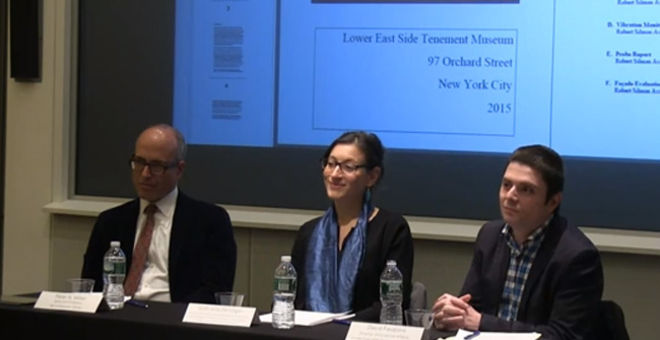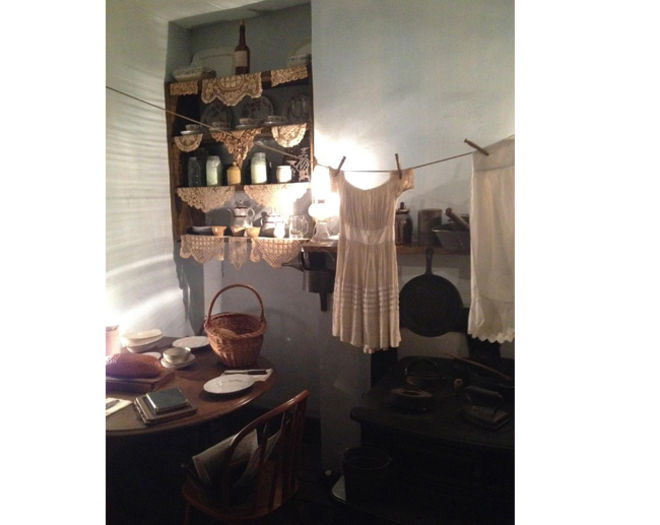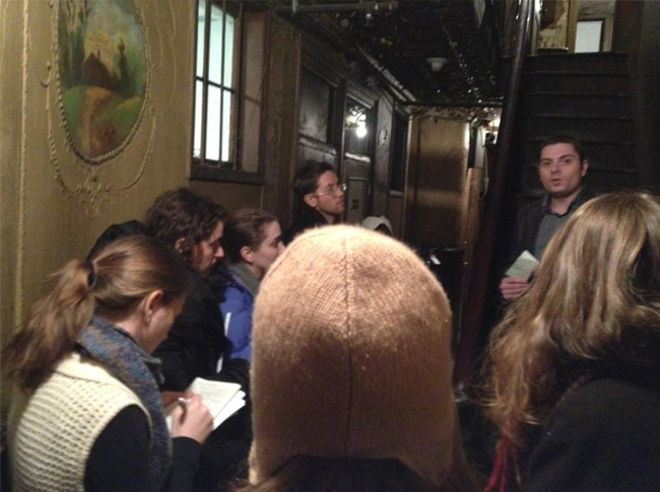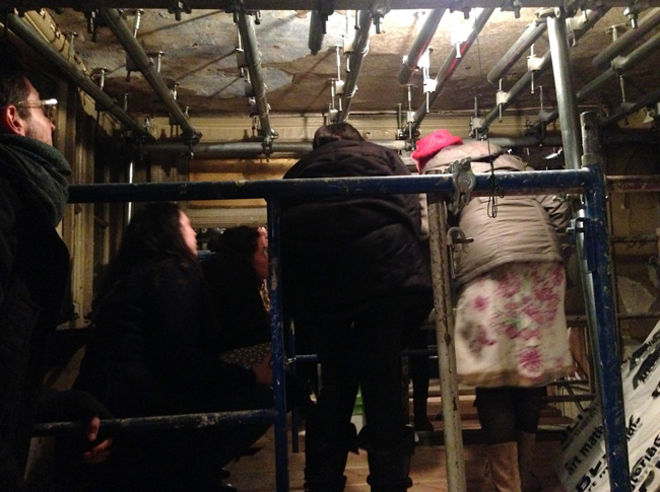
In March, Gabrielle Berlinger and David Favaloro spoke at Bard Graduate Center about the ongoing preservation of the Lower East Side Tenement Museum at 97 Orchard Street in New York City. Berlinger, a trained folklorist, is Assistant Professor of American Studies and Folklore and Tanenbaum Fellow of American Jewish Studies at the University of North Carolina at Chapel Hill. From 2013 to 2015, she participated in the Cultures of Conservation initiative at Bard Graduate Center as an Andrew W. Mellon postdoctoral fellow, carrying out a research project on the conservation needs and plans for the Tenement Museum. Favaloro, who is trained in public history, is Director of Curatorial Affairs at the museum and oversees the museum’s conservation work. He has recently completed writing a long-term preservation action plan for the institution and worked closely with Berlinger as she researched the history and conservation efforts at the museum. Their talk, entitled “A Multiplicity of Voices: The Structure of Preservation at the Lower East Side Tenement Museum,” reveals how the museum is dedicated to maintaining a balance between prioritizing the educational goals of the museum and preserving the building as “a primary artifact.”

For her research project, Berlinger approached the Lower East Side as not only “a primary artifact” but also as “a conserved object” that has been preserved and curated as an educational institution. The museum offers visitors the opportunity to learn about the stories and experiences of immigrant families who resided in the apartments from the 1860s to 1935. It is a unique building since it has not been renovated and therefore retains its original apartments and physical structures. In addition to teaching visitors about past experiences of immigrants living in New York City, the museum aims to “[forge] emotional connections between visitors and immigrants past and present.” The building’s original, physical spaces and elements are a key component to ensuring an authentic experience where visitors can empathize with past residents.
Berlinger shared that the historic structures, such as the original staircase, tell engaging stories through their age and materiality and contain a “symbolic wealth” of information and memories. However, she learned that the increasing number of visitors to the museum compromised the structural integrity of the old building. Museum staff found that the building would need frequent maintenance or renovation to withstand the constant stress from thousands of visitors walking through the structure each week. The institution established a committee to address the conservation concerns and goals for the museum. The committee, which included administrators, conservators, educators, and outside experts, worked together to create a substantial plan to preserve the museum as a historic building and accessible educational institution. Berlinger interviewed numerous staff members and consultants who contributed to the museum’s discussion on conservation needs, and she learned that first and foremost the staff believed the museum needs to prioritize its educational goals. But she also discovered that many recognized the importance of the building’s historic fabric and value as an artifact. A conservation plan, therefore, would need to preserve the physical structures but also ensure safety and accessibility to accommodate thousands of museum visitors.

David Favaloro then discussed the long-term plan and ongoing preservation work at the museum. He stated the importance of preserving different interpretive spaces in the building such as the curated apartments and the apartments in a “stabilized ruin state” in order to be able to tell a “more robust story” able to reach multiple audiences. After the consultation process was completed the question became how does the LESTM make sure that the necessary work to conserve the building takes place. Cost is an important and often inhibiting factor. For example, conservation treatment of the ceiling of one apartment cost approximately $ 100,000. Favaloro related the difficulty in fundraising for conservation projects for the building because the work reads like “maintenance” to donors. So his task is to frame the necessary conservation projects as necessary adaptations to the historic fabric of the building at 97 Orchard Street to accommodate ever increasing numbers of museum visitors and to continue to serve the mission of the museum.
Berlinger and Favaloro revealed the complex issues that historic house museums face when addressing conservation and maintenance needs. Their talk gave an inside look at what needs to be considered for justifying costly preservation work and repairs so that historical authenticity can be retained for visitor experience. The case study underscored the importance of balancing preservation and educational goals in old structures that have been converted to museums.

-Catherine Stergar and Summer Olsen
